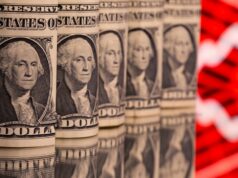Consumer push to drive rise in Philippine banks’ nonperforming loans

S&P GLOBAL RATINGS expects Philippine banks’ nonperforming loans (NPL) to increase over the next two years amid their aggressive expansion into the consumer segment.
“We are observing an uptick in the NPL ratios in these unsecured loan segments. We believe this trend is likely to continue over the next two years. As this portfolio matures, the NPL should inch up further,” S&P Financial Insti-tutions Ratings Director for South and Southeast Asia Nikita Anand said in a webinar on Thursday. “Our forecast is that the sector-level NPLs could rise to 3.4% to 3.5% of total loans over the next two years.”
As of June, Philippine banks’ NPL ratio stood at 3.4%, which was the lowest level in three months or since the 3.3% in March, data from the Bangko Sentral ng Pilipinas showed.
S&P also expects credit losses to stay elevated at around 0.8% to 0.9% of total loans — higher than the pre-pandemic average of 0.5% — due to banks’ expansion into riskier segments, she said.
Consumer loans now comprise a bigger share of banks’ loan portfolios amid the large number of underserved or unserved individuals in the retail segment, Ms. Anand said.
“The share of consumer loans and total loans has risen steadily. It is currently 22%. More importantly, the share of riskier loans such as credit cards and personal loans has risen significantly in the last few years. This segment formed around 5% of total loans back in 2019. It has grown to about 9% today. The growth in these portfolios is also very high. It’s typically in the range of 20% to 30%, which means the portfolio is un-seasoned.”
Meanwhile, NPL levels for secured lending products such as housing and auto loans have seen a sustained reduction over the past few years since spiking during the pandemic due to higher unemployment rates, she said.
Soured loans have also declined for secured products amid improving household incomes and the economy’s reopening, she added.
However, despite the continued rise in consumer loans, household debt levels in the Philippines are expected to remain manageable over the next two years as lower borrowing costs will help ease debt burdens, Ms. Anand said.
“Unemployment rates stay low in the Philippines and households continue to benefit from a steady flow of remittances,” she added.
Household debt as a percentage of Philippine gross domestic product remains low at 12% despite rising in comparison to other emerging markets, which average at around 60-65%, she said.
Operating conditions for Philippine banks are also expected to remain stable over the next two years as the economy is “expected to be resilient to the external volatilities, especially the trade tensions and tariffs due to its low reliance on exports,” Ms. Anand said.
“Our forecast is that the credit demand and credit growth is likely to stay steady with 11% to 13% growth over the next two years and this is broadly in line with the growth of 12.7% that we saw back in 2024.” — Aaron Michael C. Sy



